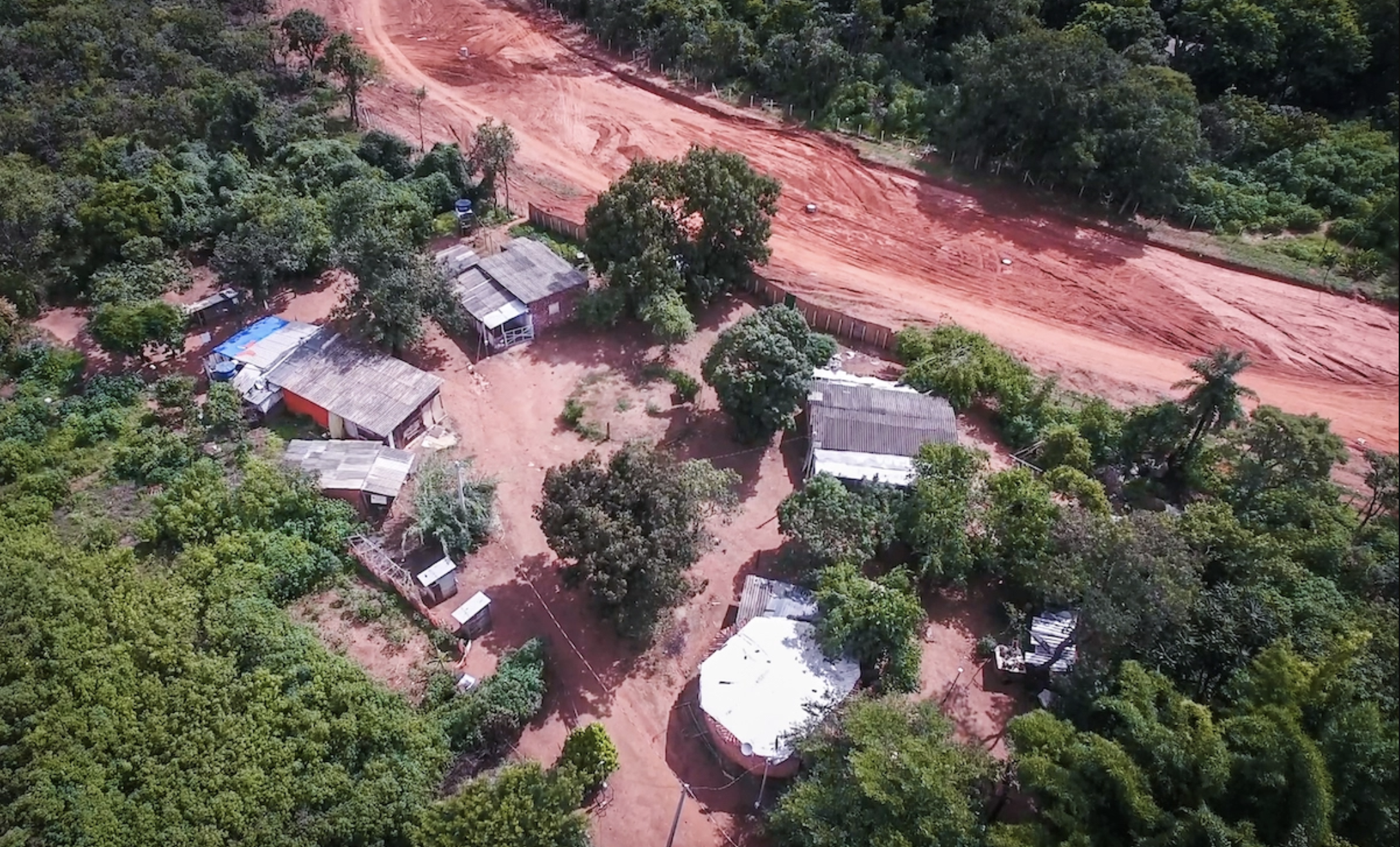
- Since its founding in 1960, Brasília has drawn Indigenous leaders and activists looking to bring their grievances and requests to the country’s center of power.
- Some, like Beto Marubo, who successfully pushed for health supplies and support for his Amazonian community during the COVID-19 pandemic, say they have better chances of achieving their goals by being in the capital.
- Another prominent figure is Joenia Wapichana, the first Indigenous woman elected to Congress, who has made it her mission to thwart the anti-Indigenous agenda of President Jair Bolsonaro.
- But many of the Indigenous people who live there say it doesn’t feel like home, with frequent incidents of prejudice and violence. Īrémirí Tukano, who has a degree in events and is now studying tourism, says he’s only passing through to learn the knowledge of the non-Indigenous and take it back to his people.
In April 1997, Brazil’s capital was the site of the brutal murder of an Indigenous leader. Galdino Jesus dos Santos, 44, was in Brasília for demonstrations demanding the demarcation of the territory of his Pataxó-Hã-Hã-Hãe people, in northeastern Bahia state. On the night of April 20, having been locked out of his boarding house after a late meeting, he slept at a bus stop. Five young men from well-off families saw him there alone. They doused him in gasoline and set him on fire.
Galdino died hours later in a hospital with burns to 95% of his body. It was a “joke,” his assailants would later tell police. A federal judge agreed, clearing four of them of murder charges and sentencing the fifth, 17 at the time, to three years in juvenile detention on the lesser charge of bodily harm. Two of the assailants were the sons of judges themselves.
Twenty-four years later, Indigenous people living in Brasília still report prejudice and violence against them.
Born in an Indigenous village in Amazonas state, Īrémirí Tukano says he experienced countless episodes of violence and discrimination since moving to Brasília 13 years ago. But one in particular hurt him deeply, he says. It was in 2012, and he was working as an intern at the Ministry of Culture.
“I was delivering a document and a public servant asked me if I was Indigenous. I said yes. And he said: ‘What are you doing here? You should go back to the bush. You have nothing to do here,’” Īrémirí Tukano recalls. “That hurt me a lot. I never forgot. I don’t want my children to feel the way I did.”
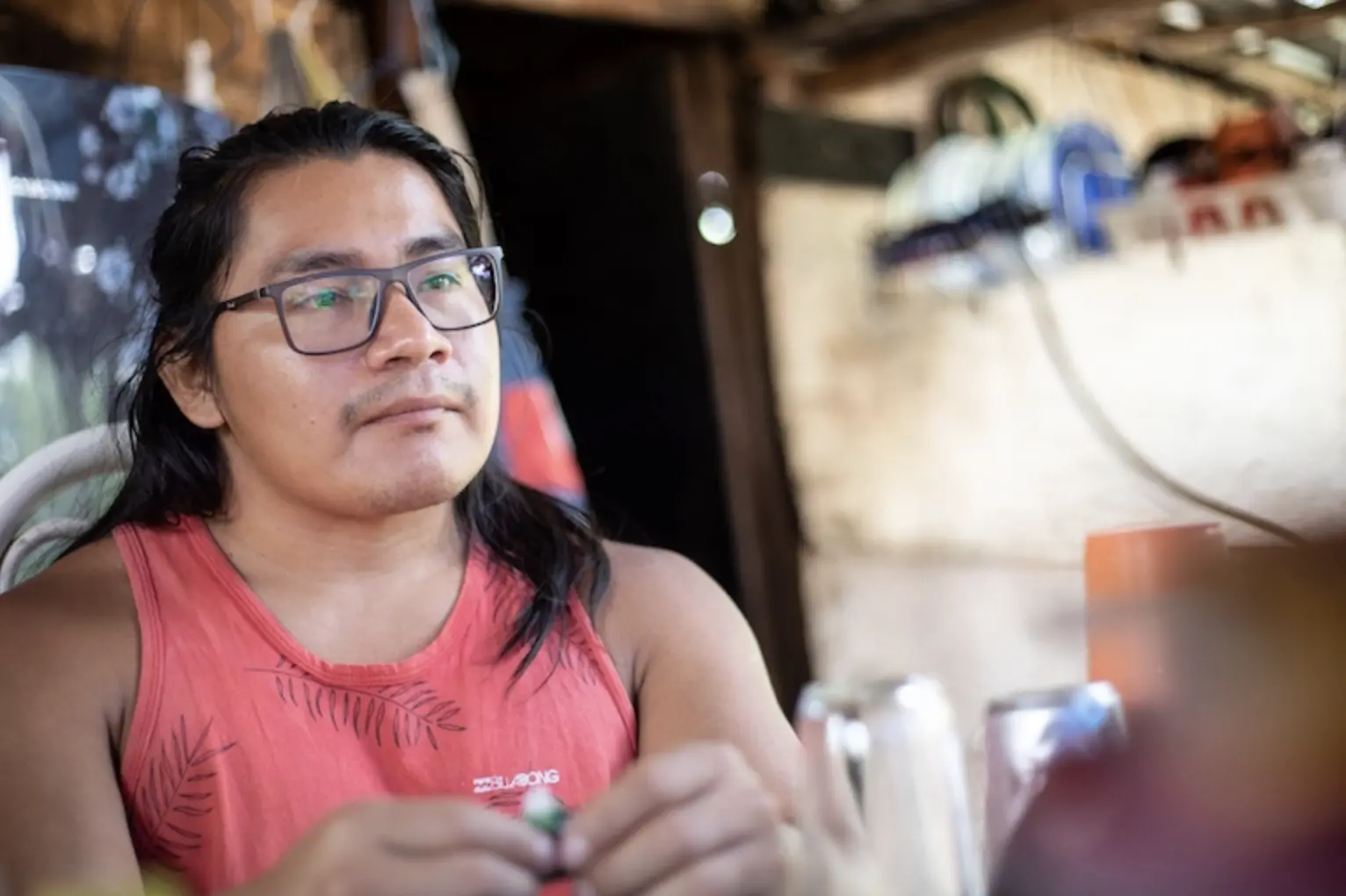
Īrémirí Tukano has a degree in events from the Federal Institute of Brasília (IFB) and now studies tourism at the University of Brasília (UnB), and says he only feels “truly included” in the city during the Free Land Camp event, the largest Indigenous gathering in the country. It brings together Indigenous groups from all over Brazil and takes place every April — the same event that Galdino had participated in before his death. Since the COVID-19 pandemic broke out in 2020, the event has been moved online.
The Tukano people, who call themselves Ye’pâ-masa or Daséa, are the most numerous ethnic group in the Eastern Tukano linguistic family — about 4,600 individuals — in northern Amazonas state. The history of contact between the Tukano and non-Indigenous dates to the 18th century, tied to massive incursions by the Portuguese colonizers in search of slaves. At the end of the 19th century, Franciscan and Salesian missionaries forcibly removed their children to be educated in schools or boarding schools, where they were taught to reject their parents’ values and ways of life, encouraged to marry within their own groups, and forbidden to speak the languages that gave them multiple, interconnected identities.
Īrémirí Tukano’s struggle for the recognition of his Indigenous identity is a common one for Indigenous people living in urban areas throughout Brazil.
Brasília was built in the 1960s to replace Rio de Janeiro as Brazil’s capital. Its location in the country’s central region featured almost no urban life, but was instead home to Indigenous groups, says UnB anthropologist Thais Nogueira. Many Indigenous people flocked here to work on the construction of Brasília, a project aimed at bringing development to the country’s interior. But the role of Indigenous people and quilombolas — descendants of Afro-Brazilian runaway slaves — in building the country’s new capital was practically erased from official history.
“It was a transit route,” Nogueira says. “This entire region had an Indigenous presence. Over time, that presence has been erased.”
About 6,000 Indigenous people live in the city today, according to the Brazilian Institute of Geography and Statistics (IBGE), which uses the figures of the entire Federal District for Brasília. Īrémirí Tukano’s family lives in the northwest region, just a few minutes’ drive from the National Congress. It has become one of the most expensive neighborhoods in Brasília in the past decade, with apartments selling from $250,000.
As the last developed area in a planned city recognized for its futuristic buildings, Brasília’s northwest region has a long history of land ownership disputes involving Indigenous people, real estate companies, and the local government.
During the 1980s, Nogueira says, Indigenous groups asked for the demarcation of a plot of land. But that would have made the northwest neighborhood project unfeasible as proposed by the government and real estate developers. Pressure escalated over the claimed area, called Santuário dos Pajés (Shrine of Shamans). While the neighborhood was being built, the anthropologist says, tractors even passed over Indigenous cemeteries and archaeological sites with the intention of erasing any trace of the Indigenous presence on the site.
The objective, Nogueira says, was “to build the ideal of modern Brasília, pointing to the future, and leave agricultural and rural vision behind, as if it were a change. And to build this official version, everything was erased. It was a deliberate erasure.”
Land demarcation battle
After a decade-long legal battle, in 2018 a court acknowledged that there had been an Indigenous occupation of the area since 1979 and ordered the establishment of the 32-hectare (79-acre) Santuário dos Pajés, the only demarcated Indigenous reserve in Brasília.
The area around the Santuário dos Pajés reserve has also been targeted by other Indigenous groups seeking to demarcate their own territory. The 12-hectare (30-acre) plot where Īrémirí Tukano’s family lives, for instance, is also claimed by the Kariri-Xocó people; other families face similar claims to their land from the Tuxá people.
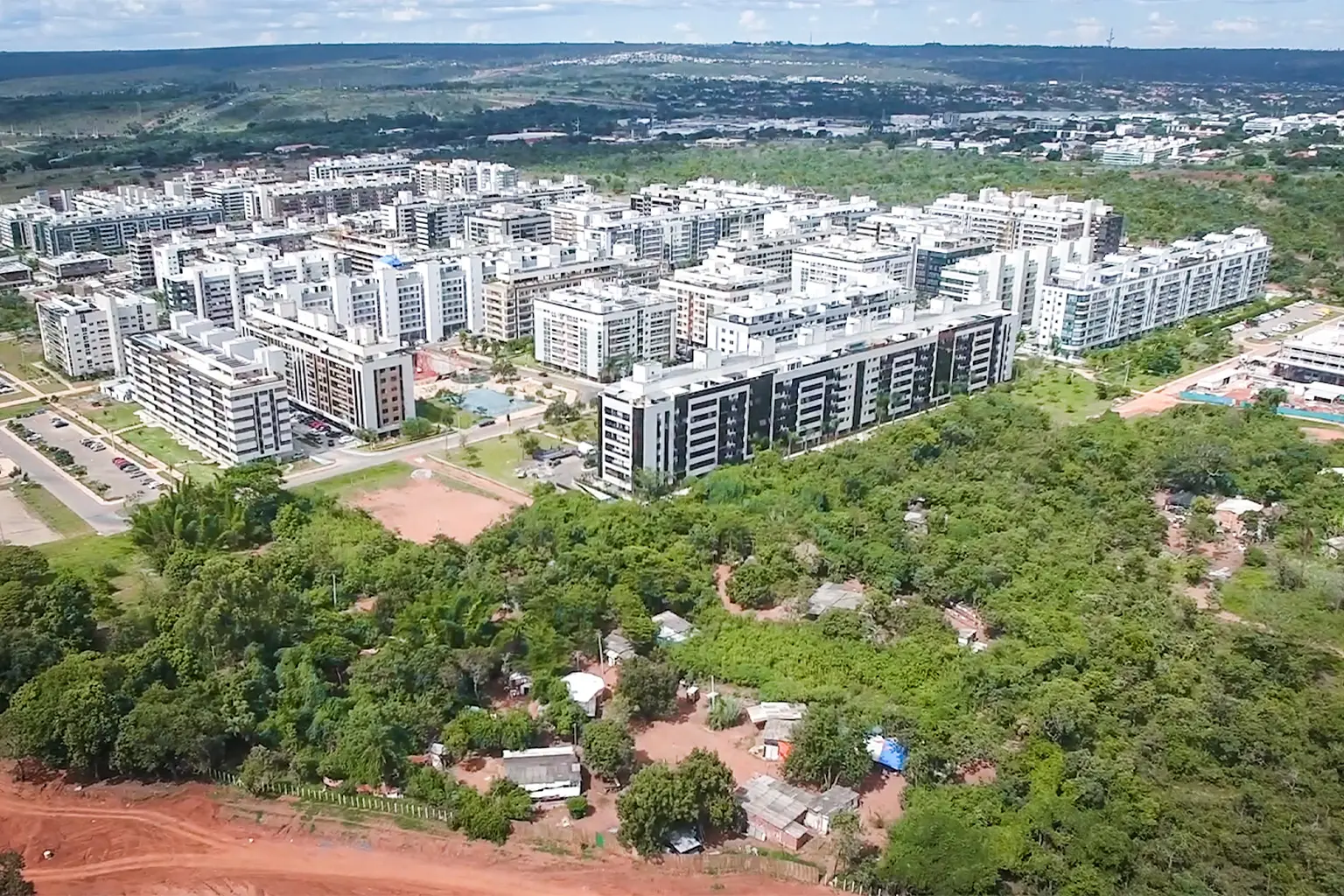
Most of the Kariri-Xocó people live in the region of the lower São Francisco River, between the states of Alagoas and Sergipe, in the northeast region, representing what remains of the merger of various Indigenous groups after centuries of being made to settle in villages and adopt Christianity. Their daily lives are very similar to those of low-income rural populations who work in the different agricultural and livestock activities in the region. However, the group preserves its Indigenous roots by maintaining the Ouricuri ritual, characterized by a set of songs and dances and the ingestion of jurema, an infusion made from the root bark of the Mimosa tenuiflora tree. The infusion, according to Indigenous tradition, causes a state of trance that breaks the barriers between past, present and future, putting the user in communion with their ancestors and deities.
The Tuxá people mainly live in an urban village in the town of Rodelas, in northeastern Bahia state. They also occupied the Ilha da Viúva (Widow Island) in the São Francisco River as small agricultural territory, but the island was submerged by the construction of the Itaparica hydroelectric plant in the 1980s.
In a statement, the government of the Federal District, the jurisdiction in which Brasília sits, said it’s donating these areas to the federal government, which has the power to create Indigenous reserves. The process could take years.
There’s little official data about Indigenous people in Brasília. 2015 data show 6,128 Indigenous residents of the wider Federal District. The 2010 census, the most recent one, showed there were 817,963 Indigenous people across Brazil, of whom almost a third live in urban areas. There were also 69 Indigenous groups who had not yet made contact with outsiders, and others requesting Indigenous recognition status with the federal government. Brazil’s Indigenous peoples speak a combined 274 languages; 17.5% don’t speak Portuguese, the national language.
Īrémirí Tukano’s Indigenous name is in his official documents because his father, Álvaro Tukano, fought to register him under that name at his birth. Īrémirí Tukano’s sister wasn’t as lucky; their father wasn’t there for her birth, and she was registered under a Brazilian name, Shirlene. Her Indigenous name is Yepário Tukano.
Indigenous peoples only won the right to register their native names in Brazil in 2012, more than a decade after the Tukano siblings were born. The change came after pressure from the Federal Public Ministry and the National Council of Justice, the government’s watchdog for the judicial system, both headquartered in Brasília.
Struggling in the city
Shirlene Tukano, 22, says she only understood that she was Indigenous when she moved to Brasília 10 years ago. Her father had arrived at their village one day from the city, where he’d been living for several years with Īrémirí Tukano, and told Shirlene Tukano to return with him. So she packed a few clothes for what she thought would be a short trip. It turned out to be a 2,700-kilometer (1,700-mile) fight to Brasília, where her father had already established himself as an activist.
“I found out that I was Indigenous when I came to Brasília. For me, I was just like anyone else,” Shirlene Tukano says. “My greatest achievement [in moving to the city] was to understand the Indigenous struggle … A lot of people say [in surprise]: ‘Are there Indigenous in Brazil today?’ But not so many talk about our resilience and battles.”
Going to school wasn’t easy for her, she says. She had never thought about wearing undergarments beneath her T-shirt “because everyone swims naked in the village river until 15 years old.”
One of the commonly held criticisms of Brasília is that it’s a city built for cars, not for people to walk and gather. Little has changed in public spaces since it was built, and the Tukano siblings say they still feel like strangers in the city.
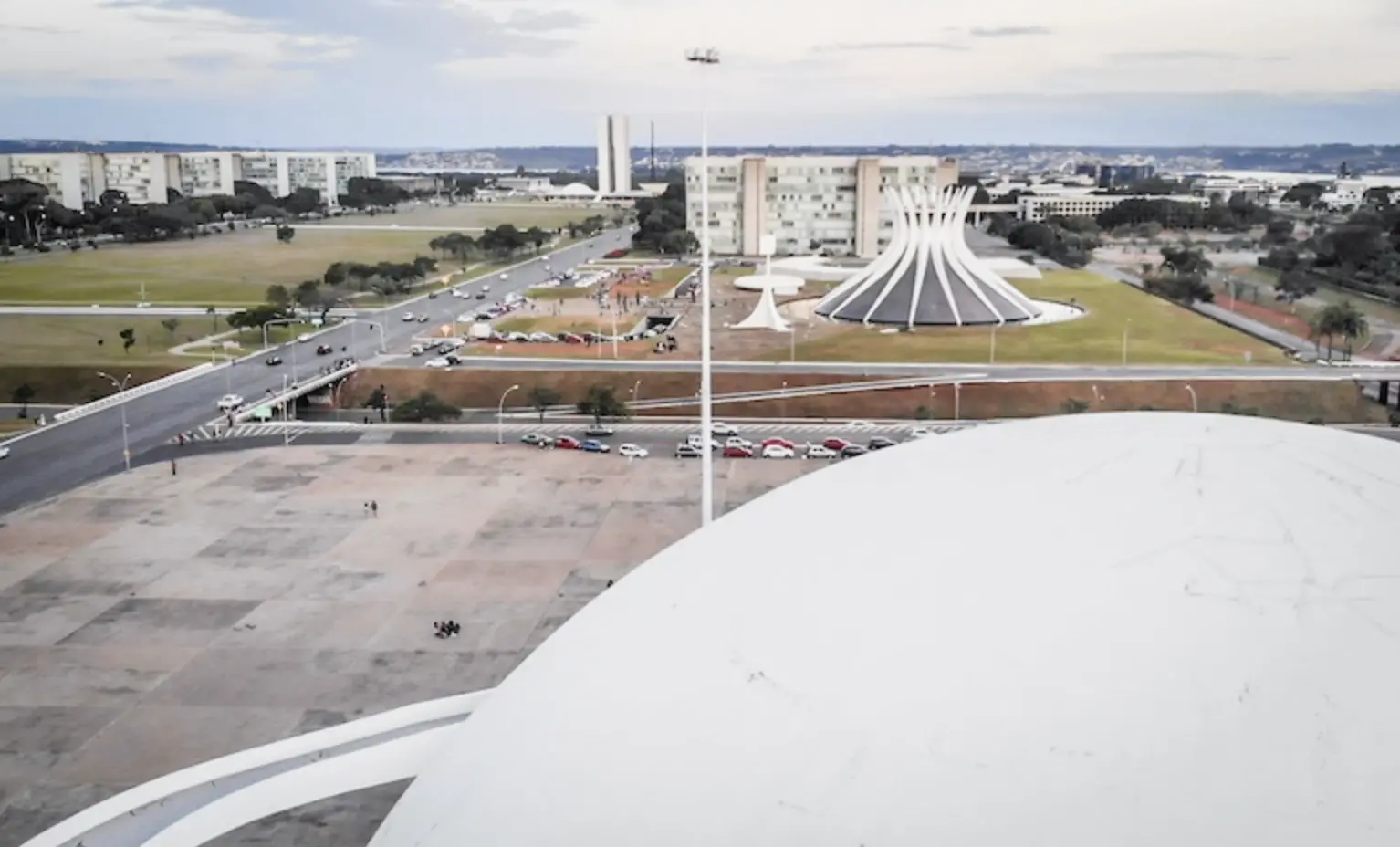
“I still have difficulty speaking, reading, writing [in Portuguese],” Īrémirí Tukano says in perfect Portuguese.
He and his sister say they were victims of bullying when they were teenagers due to their features, clothes, habits, and their inability to speak Portuguese at school.
“I had to work twice as hard, both in Portuguese [as] in the education [process] to show that I also had the skills in that discipline, that I could learn like them,” Īrémirí Tukano says. “I forgot part of my adolescence, like brainwashing.”
Incidents of violence and prejudice could be reduced if there were educational programs aimed at understanding Indigenous identities, Shirlene Tukano says.
The vast majority of Brazilian schools teach European history but not the study of Indigenous cultures, even though the latter were here long before the first Europeans arrived in the 1500s.
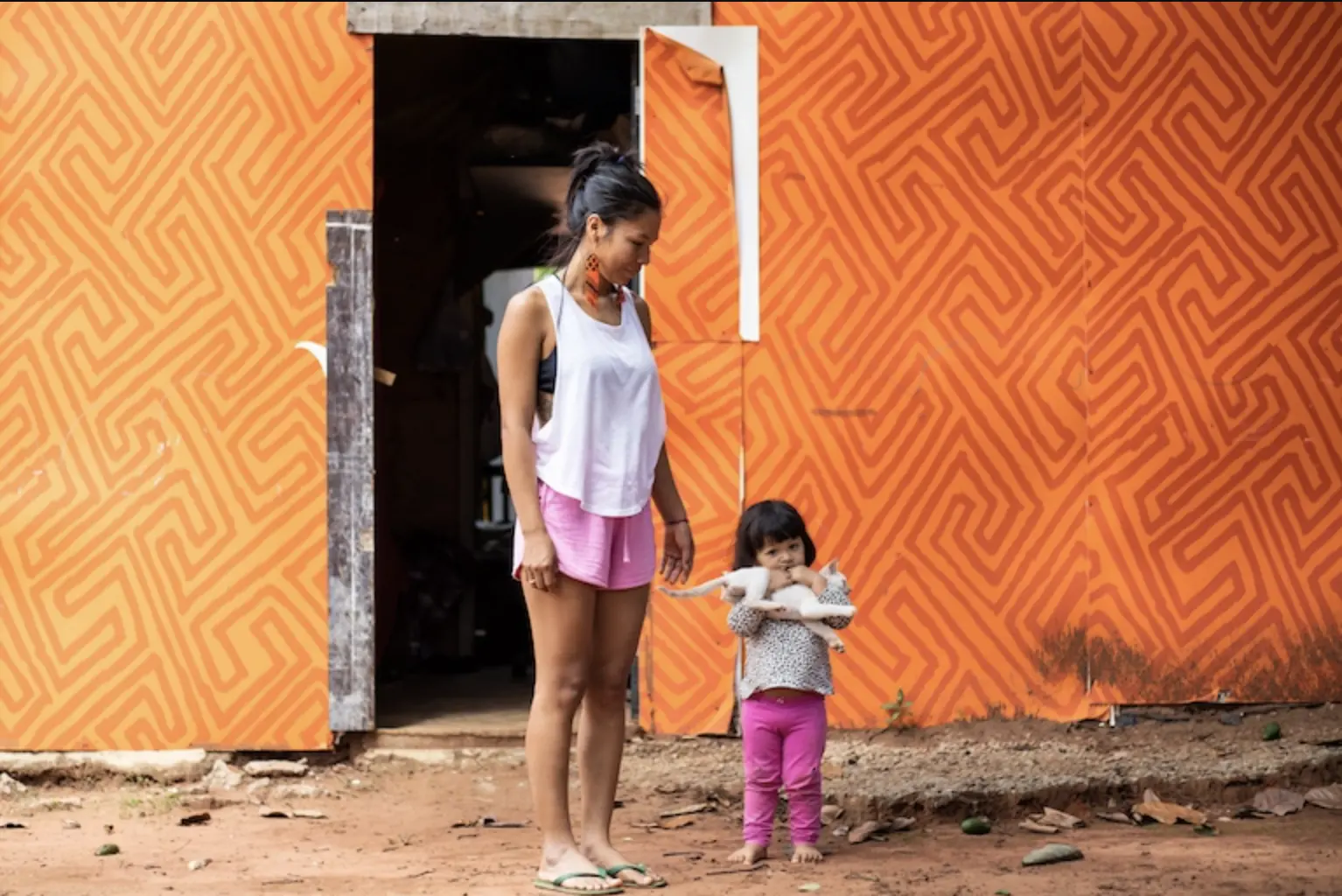
“It is not because we are Indigenous that we have to remain like that figure treated in school books,” Shirlene Tukano says. “Prejudice comes from that because the school teaches in a way and people create an [inaccurate] image of the Indigenous people. And this prejudice comes: ‘What are you doing here? You should go back to the bush.’ In the books, this is it; we are wild.”
The Tukano siblings were awarded scholarships to study at a private school. But Shirlene Tukano says she still trembles when she has to do an oral presentation at school because she never learned how to do it back in the village.
Close to the power base
As the seat of the federal government, Brasília has always drawn Indigenous leaders from across the country bringing their issues to the center of power.
Beto Marubo, 43, is one of them. He moved here in January 2018 from the Vale do Javari, one of the biggest Indigenous reserves in the country, in the Amazon region, to represent his community and supported by an Indigenous association. Prior to that, he spent years traveling back and forth to the capital to discuss domestic problems that depended on federal decisions. Vale do Javari is larger than Austria, and its size and isolation in the far west of Amazonas state mean it takes residents 15 days by boat to reach the closest city. Few of the reserve’s leaders speak Portuguese.
“If I were in the village, I would not have been able to compel private and philanthropic initiatives and government with this specificity,” Beto Marubo says.
During the COVID-19 crisis, he advocated for health assistance for Indigenous people. He was part of a group that pressured the Federal Supreme Court, the federal government, and private companies to provide equipment and draw up medical assistance planning focused on remote areas.
One of the most prominent Indigenous figures in Brasília is Joenia Wapichana, 47, the first Indigenous woman to sit in the National Congress. She left her community in Roraima state, about 4,000 km (2,500 mi) north of Brasília, more than two decades ago to work as a lawyer on Indigenous cases before the Federal Supreme Court. One of her biggest achievements was securing the demarcation of the Raposa Serra do Sol Indigenous Reserve in Roraima in 2009. In 2018, she was elected to the Chamber of Deputies, the lower house of Congress.
Joenia Wapichana says her mission is to stop President Jair Bolsonaro’s abuses against Indigenous people. After taking office in January 2019, Bolsonaro tried to delegate the authority for demarcating Indigenous reserves to the Ministry of Agriculture. But Congress forced him to step back, with Joenia Wapichana playing a key role in that effort. Bolsonaro also plans to open up protected areas to mining activity, which the country’s Constitution currently prohibits.
“Being Indigenous in Brazil is a challenge to keep our fight for rights alive,” Joenia Wapichana says in a recent interview.
She has dozens of symbolic objects in her office and often wears Indigenous artifacts during congressional sessions. She also consults with visiting shamans for rituals to avoid negative energy.
Joenia Wapichana has ambitions to seek reelection, maybe run for a Senate seat, or even as governor in Roraima. But her dream as Brazil’s first Indigenous lawyer is to be the first Indigenous justice on the Federal Supreme Court. Yet despite her life’s work centering on the capital, she says she doesn’t feel Brasília is her home and goes back very often to Roraima.
In 2019, Simone Terena left Mato Grosso state, in Brazil’s midwest region, to work as a congressional adviser for a left-wing party. Her two children still live in her village; they didn’t adapt to living in an apartment.
“The most significant difficulty in being Indigenous is to get used to a space that is not ours and not being able to practice traditions, besides having no family [here],” Simone, 37, says. “In the Indigenous territory, everyone knows and helps each other. I lived a year in an area [where] the neighbors didn’t [even] look at me.”
Beto Marubo says Brasília should have a place to receive the Indigenous people who travel here from all over the country — a place where they can sleep and meet others quickly. Such a facility would make them closer, he says, as many don’t speak Portuguese and have little money to move around the country.
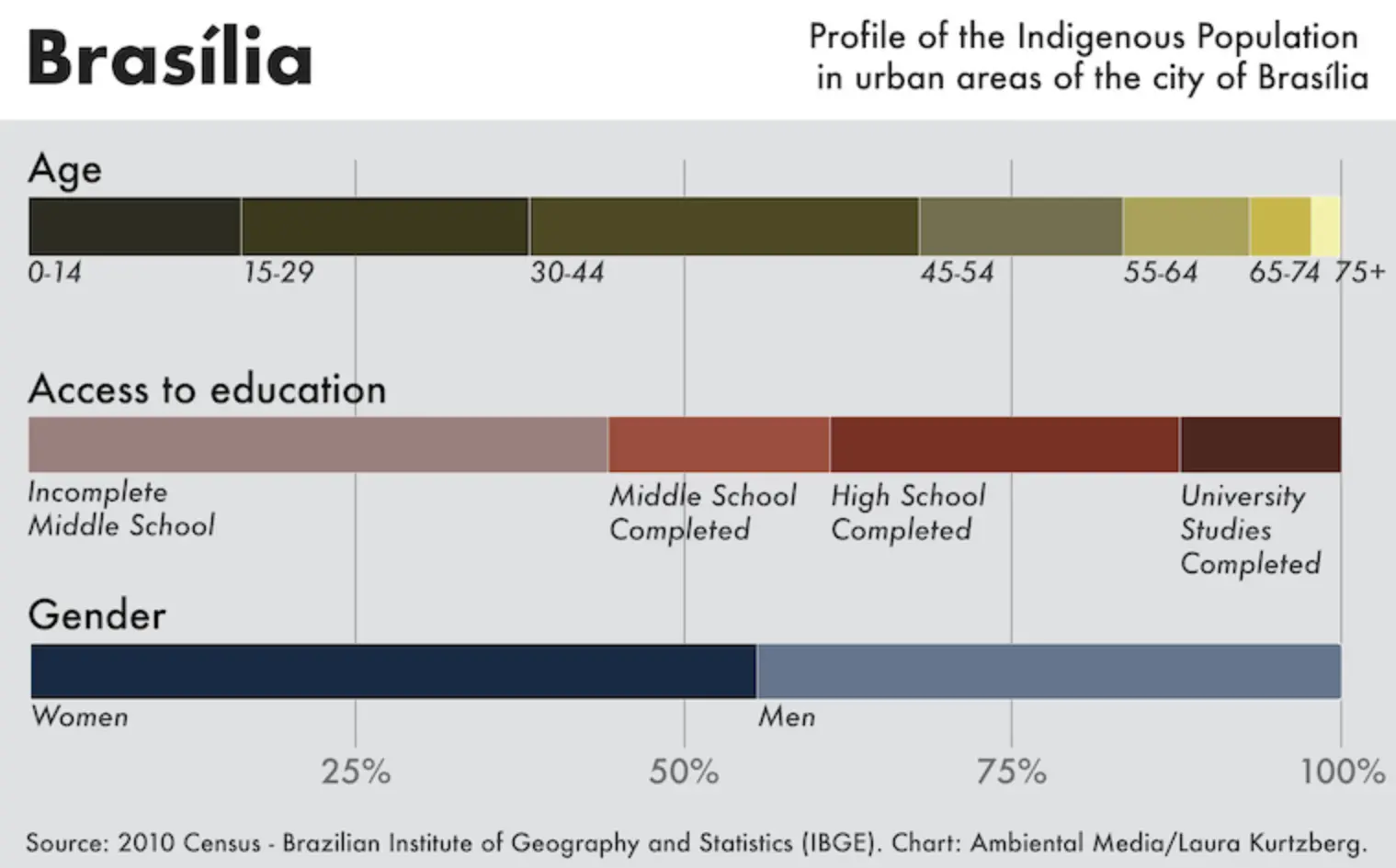
UnB, under the umbrella of the federal government, houses the only sanctuary like that in the city. It’s an area called Maloca that imitates Indigenous houses. There are also specific programs to help Indigenous students learn what they missed at school back in their villages, and initiatives to make it easier for them to fit into urban life.
Īrémirí Tukano, a current UnB student, says he won’t stay in Brasília.
“I’m just passing by. I’m here to learn the non-Indigenous laws, from congressmen, senators and all sorts of powerful people here in Brasília, the capital of Brazil,” he says.
“I want to gather this knowledge and take it back to my people.”
Additional reporting by Karla Mendes





